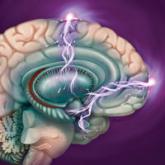Article

Bipolar disorder or borderline personality disorder?
- Author:
- Sabrina Correa Da Costa, MD
- Marsal Sanches, MD, PhD, FAPA
- Jair C. Soares, MD, PhD
Understanding the clinical, psychopathological, and sociodemographic correlates is critical.
Article

Neuromodulatory options for treatment-resistant depression
- Author:
- Manu Suresh Sharma, MD
- Michael Ang-Rabanes, MD
- Salih Selek, MD
- Prashant Gajwani, MD
- Jair C. Soares, MD, PhD
Evidence is strongest for ECT and rTMS, but other modalities show promise
